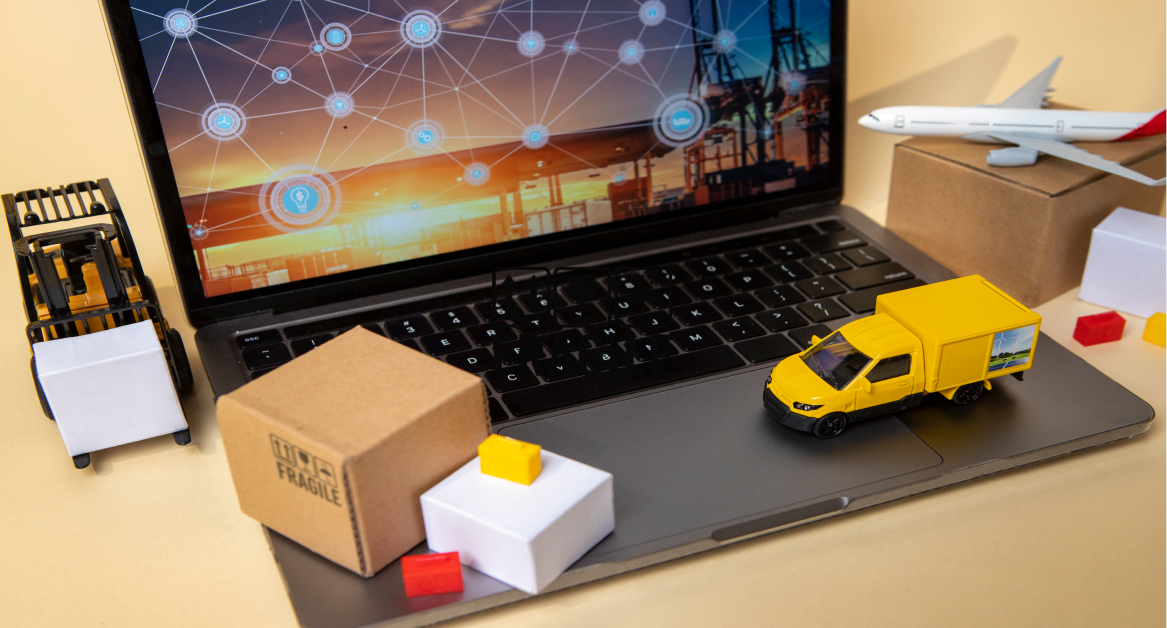Did you know that mismanaged IT assets can cost companies millions?
A startling study by EMC Corporation revealed that data loss alone accounts for over $1.7 trillion in lost revenues, with annual data loss volumes having risen by 400 percent in just two years.
ITAM is crucial behind the seamless operation of organizations large and small, enabling the robust handling of hardware and software assets throughout their life cycle. With the right asset management tool, companies can not only track and manage their assets more efficiently but also unlock cost savings and bolster their bottom lines.
This guide offers a deep dive into IT asset management, highlighting how best practices in ITAM can revolutionize your IT infrastructure, making it a streamlined, cost-effective force.
Understanding IT asset management
At its core, IT asset management is an integrated approach that combines detailed asset information tracking with digital asset management. The goal is straightforward yet complex: to oversee the entire organization’s IT assets. This encompasses hardware and software, ensuring each piece is properly acquired, deployed, maintained, and, eventually, retired.
IT asset management best practices rely on a foundation of good asset discovery and maintenance, ensuring that every asset, from laptops to software licenses, is accounted for. An effective ITAM can act as the central intel for all asset-related data. It offers a bird’s-eye view of asset usage and helps in making informed decisions about IT investments.
Therefore, in a landscape where hardware and software assets can quickly become obsolete, understanding the intricate IT asset lifecycle management is not just beneficial; it’s a necessity.
The IT asset management lifecycle
The lifecycle of IT assets is a comprehensive journey that begins long before a device or software application is deployed and continues until its eventual retirement – a process deeply connected to effective asset protection practices.

Let’s break down this lifecycle into its core stages:
Stage 1: Acquisition of IT assets
The procurement of IT assets is the first step in the IT asset management lifecycle. This phase involves selecting and purchasing hardware and software assets that align with the company’s current and future needs. It is a stage where strategic planning meets practical requirements, as it involves:
- Assessing needs: Determining what hardware and software assets are required to support employee productivity and organizational goals.
- Vendor selection: Choosing the right vendors based on factors like price, support, and compatibility with existing systems.
💡 If you have a distributed team, this part could be daunting considering the geographical distance, but there are services, like Esevel, who provide easy cross countries purchase, deliver, and retrieve of IT assests.
- Purchase management: Negotiating contracts and managing purchases to ensure cost-effectiveness without sacrificing quality.
Stage 2: Deployment and use
Once acquired, IT assets are deployed within the organization. This stage is critical as it sets the tone for the asset’s productivity throughout its life cycle. Deployment includes:
- Asset tagging and cataloging: Implementing asset tagging and creating a catalog that reflects company-specific IT devices and peripherals.
- Configuration and distribution: Setting up assets with necessary configurations and distributing them to the end-users.
To reduce onboarding time and ensure consistent configurations across distributed teams, incorporate software deployment automation into Stage 2 workflows to enable zero-touch provisioning, policy-based app rollouts, and reliable patching from a centralized console.
Stage 3: Maintenance and upgrades
The maintenance phase ensurestrack that IT assets remain functional and efficient. It involves regular check-ups, updates, and repairs:
- Software updates: Keeping software licenses up to date and managing the grouping of applications by employee groups.
- Hardware repairs: Addressing wear and tear, replacing parts, and ensuring hardware is in good working order.
- Upgrades: Improving assets with additional features or capabilities to extend their useful life.
Stage 4: Decommissioning and disposal
The final stage of the IT asset lifecycle involves responsibly disposing of IT assets that are no longer useful or have become obsolete. This phase must be handled with care to protect sensitive data and comply with environmental regulations:
- Data sanitization: Securely wiping all sensitive information from devices to prevent data breaches.
- Recycling and reselling: Disposing of IT assets in an environmentally responsible way or reselling them if they still hold value.
7 proven IT asset management strategies
Effective IT asset management is not just about implementing a system—it’s about adopting strategies that can adapt and evolve with the changing IT landscape.

- Develop a comprehensive ITAM policy
The bedrock of effective IT asset management is a comprehensive ITAM policy that outlines how to manage IT assets throughout their lifecycle. This policy should detail:
- Roles and responsibilities: Define who manages IT assets at every stage of their lifecycle.
- Asset procurement and usage guidelines: Establish clear criteria for the procurement and use of IT assets to avoid unnecessary expenditures.
- Maintenance schedules: Implement scheduled check-ups and maintenance to prolong the lifespan of assets.
- Leverage IT asset management software
In the context of remote work, which has become a staple for modern businesses, leveraging IT asset management software is more than a convenience—it’s a necessity. Esevel recognizes this imperative and delivers a robust solution tailored for distributed teams.
These are exactly what your remote team’s ITAM needs:
- Centralize asset information: Esevel’s platform acts as a central hub for all asset-related data, ensuring that every piece of hardware and software is accounted for.
- Automate asset discovery: With features such as asset discovery, Esevel’s system automatically integrates new assets into the asset management tool, streamlining the process and reducing the potential for manual errors.
- Support remote management: Esevel’s IT asset management tool excels in remote management capabilities. It enables IT administrators to maintain oversight and control of all assets, regardless of their physical location. This is especially important for troubleshooting, updates, and security management in a remote work environment.

- Implement asset tagging and tracking
Asset tagging and tracking are essential for maintaining control over hardware and software assets. This strategy includes:
- Using unique identifiers: Tag each asset with a unique identifier to simplify tracking and management.
- Maintaining an asset registry: Keep an updated registry of all assets, including their status and location.
- Utilizing rfid or barcode technology: Employ modern technologies for real-time tracking and easier inventory management.
- Conduct regular IT asset audits
Regular audits of IT assets ensure that the asset information is accurate and current, helping to identify issues such as:
- Unrecorded assets: Locate and record assets that are not accounted for in the asset management system.
- Redundant assets: Identify and remove assets that are no longer in use or needed.
- License compliance: Ensure that software licenses are compliant with legal and vendor requirements.
- Optimize the asset lifecycle
Managing the lifecycle of IT assets effectively can significantly reduce costs and improve asset utilization:
- Implement lifecycle planning: Plan for each stage of the asset’s life, from acquisition to disposal, to maximize its value.
- Improve asset utilization: Monitor asset usage to ensure that each asset is being used to its full potential.
- Plan for disposal: Prepare for the end-of-life of assets with secure data deletion and environmentally friendly disposal methods.
- Educate and train your team
A well-informed team is crucial for the success of IT asset management strategies:
- Regular training: Conduct training sessions to keep the team updated on new ITAM processes and tools.
- Clear documentation: Provide clear documentation and guidelines to ensure consistency in asset management.
- Foster a culture of compliance: Encourage a culture where adherence to ITAM policies is the norm, not the exception.
- Streamline ITAM with integration
Integrating IT asset management tools with other business systems can provide a holistic view of organizational assets:
- Connect with financial systems: Link ITAM tools with financial systems for accurate budgeting and cost allocation.
- Sync with HR platforms: Integrate with HR systems to streamline the onboarding and offboarding processes.
- Unified dashboard: Use dashboards to provide executives with a clear view of the asset landscape and its impact on the business.
By implementing these strategies, companies can not only manage their IT assets more effectively but also achieve significant cost savings, improve security, and ensure compliance with regulations.
Challenges in IT asset management
As businesses embrace the digital transformation, IT asset management (ITAM) has become a critical operation, yet it’s not without its hurdles. Recognizing and understanding these challenges is the first step towards mitigating them. Here are some of the common challenges that organizations face in ITAM:
Complexity in tracking distributed assets
In an era where remote work is prevalent, assets are no longer confined to a single location. Companies must track and manage devices scattered across different geographies, which can be a complex task. It requires a sophisticated asset management tool that can operate beyond the walls of a traditional office.
Cybersecurity threats
The increase in the number of devices and applications used by companies has given rise to complex cybersecurity challenges. Each asset could potentially serve as a gateway for security breaches. Ensuring that all assets are secure, especially those outside the corporate firewall, becomes a major concern for IT managers.
Managing the asset lifecycle
From procurement to disposal, managing the lifecycle of an IT asset is a multifaceted process. Companies often struggle with optimizing each stage—acquiring the right assets, maintaining them efficiently, and retiring them responsibly—while also trying to extract the maximum value from each asset.
Software license management
Keeping track of software licenses is a daunting task that can lead to financial loss either through unused licenses or through fines resulting from non-compliance. Accurately managing software assets, understanding their usage patterns, and ensuring compliance with licensing agreements is a challenge that can overwhelm IT departments.
Evolving technology
The pace at which new technologies are introduced can render IT assets obsolete quicker than ever before. Companies must regularly evaluate their IT inventory to decide whether to upgrade, update, or retire assets, which requires continuous attention and resources.
Cost optimization
IT assets represent a significant investment for any company. Balancing the need for modern and effective IT tools with budget constraints is a persistent challenge. This includes making decisions about repairing versus replacing assets and optimizing the use of existing resources.
Streamline your remote ITAM with Esevel
Navigating IT asset management (ITAM) can be complex, yet it’s critical for the success of any modern business, especially those leveraging remote and distributed workforces. Effective ITAM is not a luxury; it’s a fundamental part of operational success, ensuring that IT resources are secure, compliant, and optimally used.
As you aim to enhance your ITAM strategy, consider Esevel as your partner in this evolution. With a comprehensive suite of tools for asset tracking, in-country delivery-support-retrieve, and compliance management, Esevel enables businesses to overcome common ITAM challenges efficiently and pave the way for remote growth.Manage your IT asset with ease and top-cotch security with Esevel. Contact us now!







